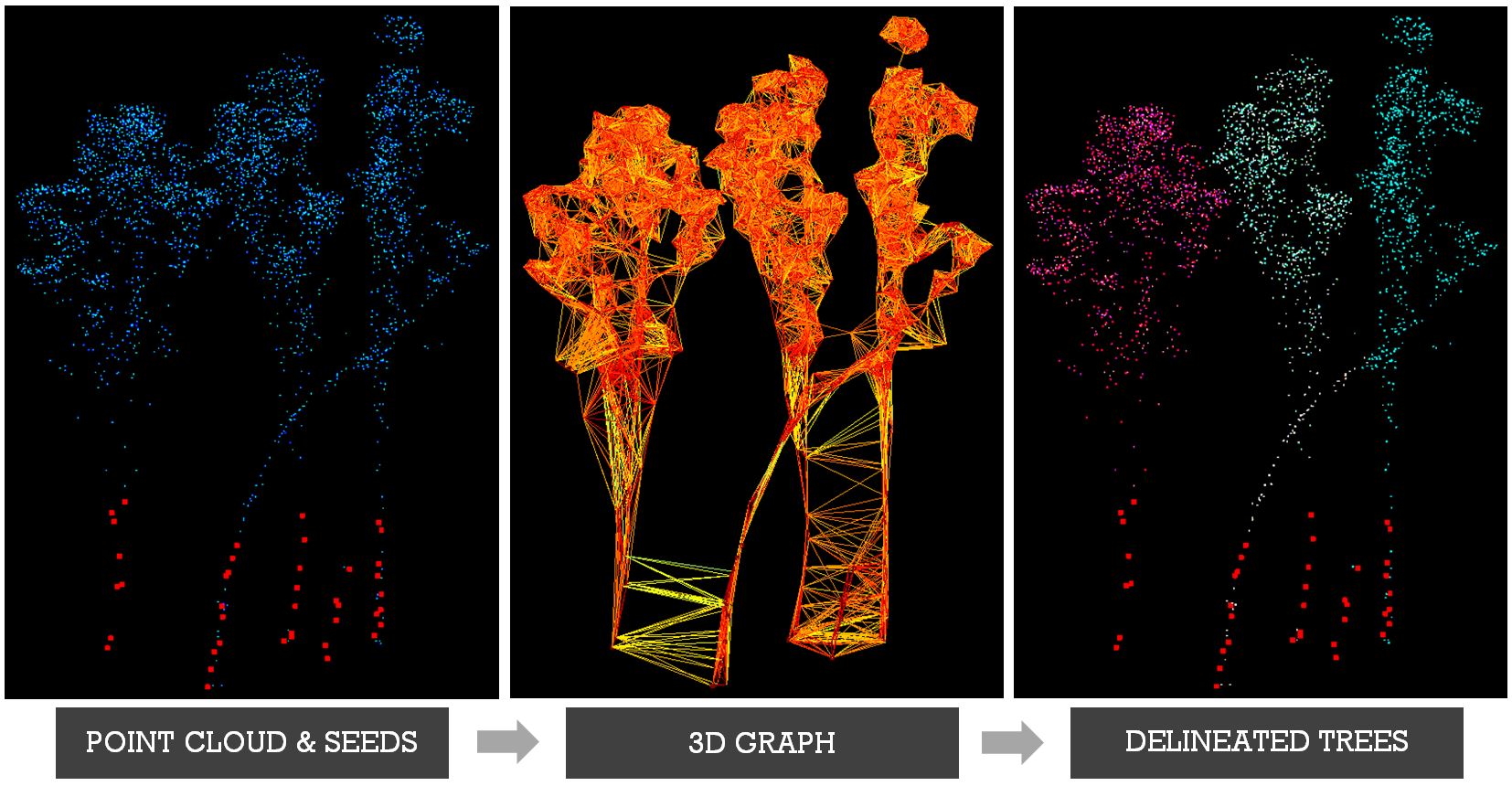Congrats to Yuri on his first PhD publication as part of our current ARC Linkage (link) project.
The gist:
-We demonstrate a new method to delineate individual eucalyptus trees in a structurally complex forest from airborne laser scans.
-This is important for applications such as biomass estimation, vegetation composition quantification and also for the derivation of individual tree health from combined LiDAR and hyperspectral data, which is the topic of our ongoing research.
In a nutshell:
-airborne laser scans are typically used to derive vegetation properties at the plot scale providing limited information about the vegetation composition within the plot.
-eucalyptus trees have a structurally complex canopy featuring multiple tops so delineating individual trees with commonly used top-down tree algorithms that require a distinct tree top, is not feasible.
-we therefore developed a bottom-up method firstly identifying tree trunks using clustering and then tree crowns using random walker algorithms on dense, full waveform LiDAR scans to delineate individual trees.
Shendryk, I., M. Broich, M.G. Tulbure & S.V. Alexandrov. (2015). Bottom-up delineation of individual trees from full-waveform laser scans in a structurally complex eucalypt forest. Remote Sensing of Environment 173 (2016) 69–83 . [Download]
Graphical abstract:

